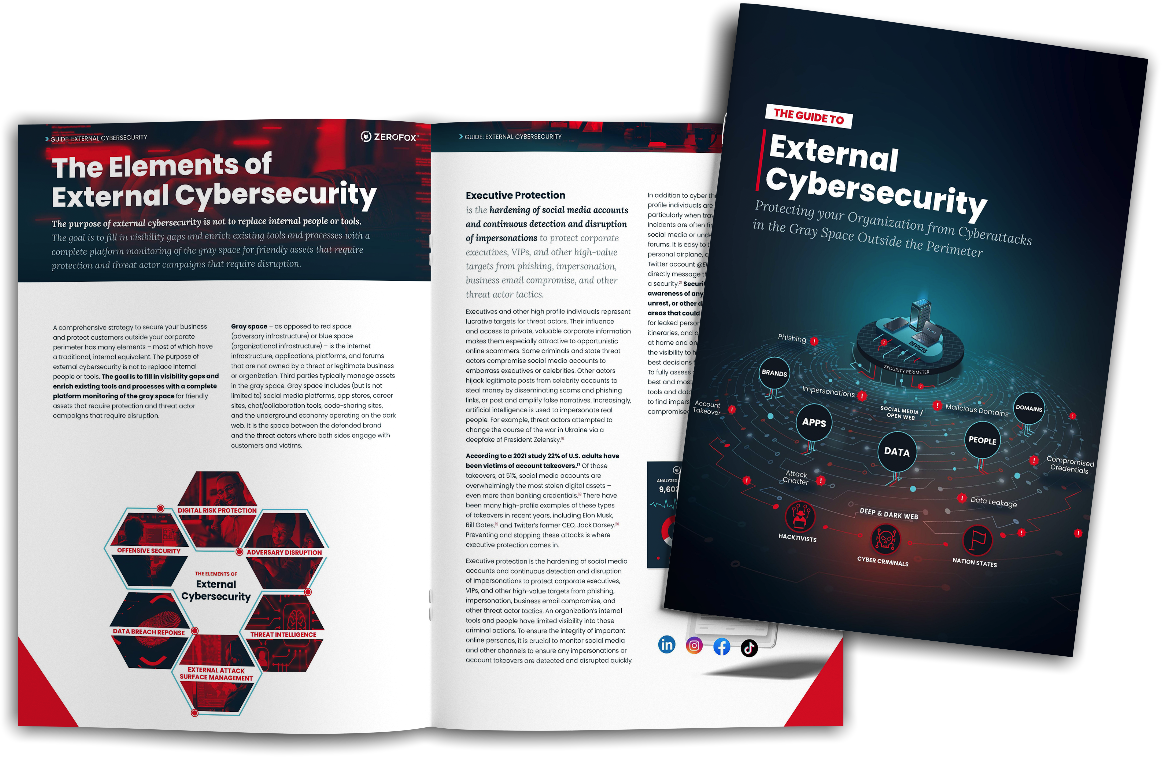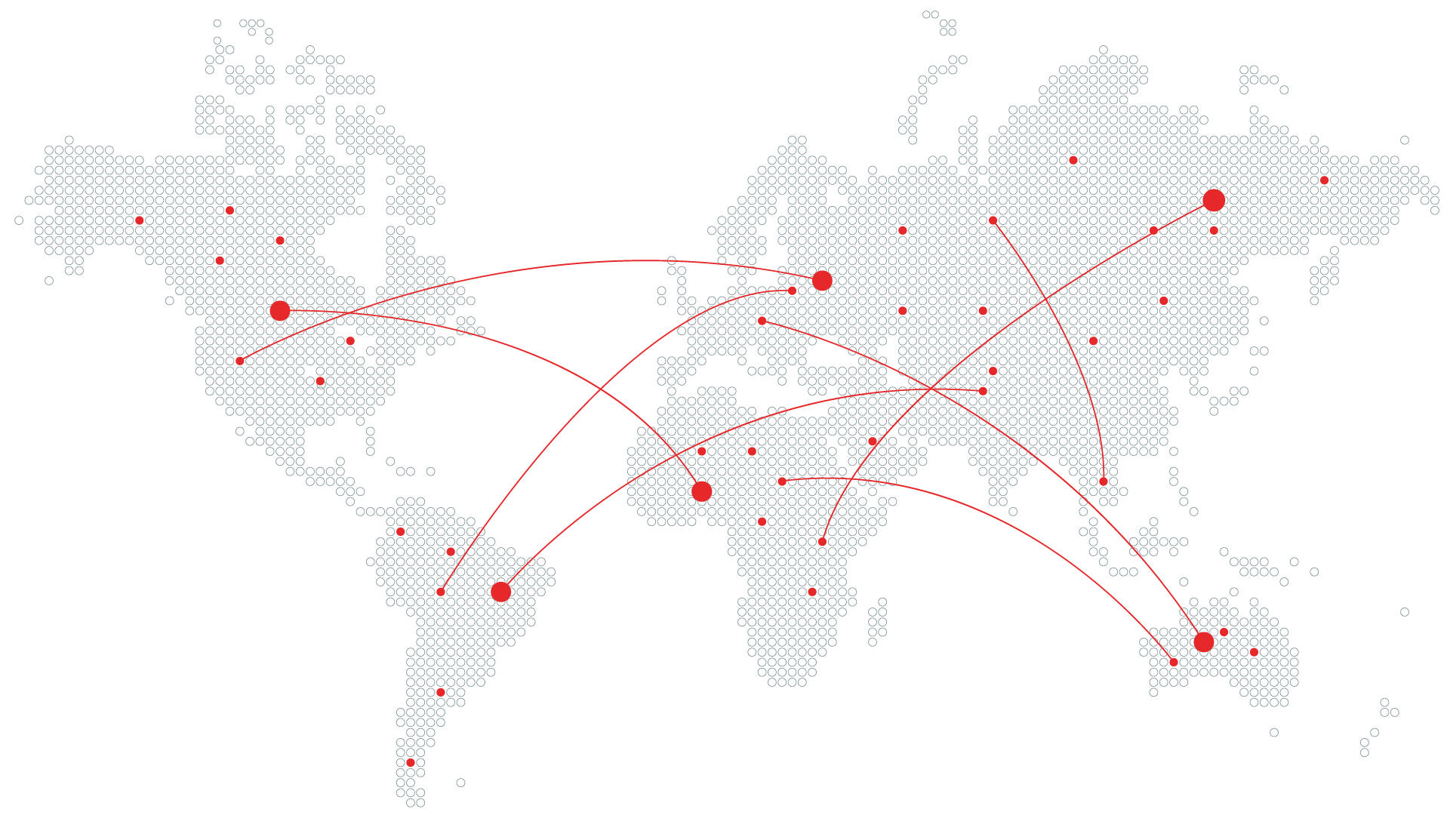
How to Protect Your Company's Domain Name: 6 Steps Every Business Must Take
What is Domain Privacy and Security?
Domain privacy and security is the practice of protecting your company’s domain name from cyber threats that can compromise your brand, customers, and operations. It involves implementing safeguards, controls, and technologies to prevent adversaries from hijacking your domain, intercepting DNS requests, or launching phishing and spoofing campaigns that appear to come from your organization.
A strong domain security posture includes monitoring for look-alike registrations, enforcing secure DNS configurations, and maintaining up-to-date SSL certificates. It also extends to protecting WHOIS data, limiting public exposure of administrative contact details, and ensuring domains are registered through trusted providers.
Together, these measures reduce the risk of domain hijacking, credential theft, and fraudulent use of your brand online. By securing your domain, your organization strengthens its digital perimeter, preserves customer trust, and prevents attackers from using your name to deceive or defraud others.
But technology alone isn’t enough. The real value of domain privacy lies in how it protects the business behind the brand—from its reputation and revenue to its customer relationships.
Why Domain Privacy Is Important for Businesses
Your domain is really your digital identity. When threat actors register look-alike domains or spin up fraudulent sites, they can easily trick customers, partners, and even employees into sharing sensitive data or clicking malicious links. These impersonations damage trust, dilute your brand reputation, and open the door to phishing, malware, and financial fraud.
Protecting your domain privacy helps prevent attackers from weaponizing your brand against you. Continuous monitoring, AI-driven detection, and rapid takedowns give you the visibility and control to stop spoofed or hijacked domains before they reach your audience. With proactive domain protection in place, businesses can safeguard customer trust, maintain operational integrity, and preserve brand credibility across the internet.
Domain cyberattacks happen in a variety of ways—and cyber criminals are always looking for new ways in. A comprehensive approach to domain privacy and security is vital and should cover:
- Domain name registration
- Domain access controls
- DNS security
- Encryption
- Email authentication
- Domain monitoring
Types of Domain Cyberattacks
With a comprehensive approach to domain security, you can prevent or mitigate the following types of domain cyberattacks:
- Email Spoofing
Email spoofing tricks the recipient of an email into thinking that it came from your official company domain, when it was really sent by a threat actor. - Domain Spoofing
Domain spoofing is when an online adversary creates a copy of your website on a domain that they control and impersonates your brand in an attempt to scam your customers. - DNS Spoofing
DNS Spoofing is when an unauthorized cyber adversary exploits the DNS system to change the responses to DNS queries and divert web traffic from the target domains. - Denial of Service (DOS) Attacks
A DoS or Distributed Denial of Service (DDoS) attack attempts to disrupt the availability of your company website by flooding your IP address and network infrastructure with junk traffic. - Registrar Hacking
When the designated registrar for your company domain name is hacked and attackers gain administrative access to your domain. Web traffic can then be diverted to a malicious website. - Domain Hijacking
Also known as domain theft, this is a type of account takeover attack where a cyber adversary gains unauthorized access to your company domain control panel. - Typosquatting
Typosquatting is when a cyber adversary registers a domain name that is similar to yours, but contains a common spelling error that your customers might make when attempting to access your website.
6 Steps to Create a Comprehensive Domain Protection Strategy
Following these best practices will help your organization protect your domain privacy and security.
- Choose a Reputable Domain Name Registrar
- Register Lookalike Domain Names
- Secure Access to Your Domain
- Fortify Your DNS Security
- Validate Emails with DMARC
- Implement Continuous Domain Monitoring and Protection
Step 1: Choose a Reputable Domain Name Registrar
The first step to shoring up your domain privacy should always be choosing a reputable domain name registrar.
How to Protect Domain Privacy When Registering a New Domain
- Look for a Domain Registrar that is accredited from registry operators and the Internet Corporation for Assigned Names and Numbers (ICANN).
- Choose a registrar that can demonstrate investment and expertise in cybersecurity, including controls, processes, technologies, and staff training.
- List yourself as the owner of record to ensure that nobody else can hold your domain name hostage against your will.
Domain Privacy Tip: Take ownership of a domain name before you register it as an LLC. If you don’t, there’s a good chance your domain name will be snapped up by an opportunistic squatter who may try to sell it back to you at an exorbitant cost.
Step 2: Register Lookalike Domain Names
The easiest way to start defending against typosquatting and domain spoofing attacks is to register lookalike domains yourself and redirect them to your company’s real website. Registering these domains on your own means that they can’t be registered by cyber adversaries who would use them to divert traffic away from your website and potentially scam your customers.
As you work to register domain names similar to yours, you may wish to include:
- Domain names that are typographical errors of your domain name
- Domain names that look similar to your domain name, with just one or two character differences
- Similar or identical domain names under other top-level domains (e.g. dot-info, dot-co, dot-biz, etc.)
Domain Privacy Tip: Domain hijacking can sometimes happen when your domain registrations unexpectedly expire, or when a cyber attacker successfully impersonates your business to your designated registrar.
Step 3: Secure Access to Your Domain
Securing access to your domain control panel and controlling user permissions are important steps to preventing domain hijacking attacks. A number of employees at your organization may require access to your domain control panel to fulfill their job duties, but only trusted individuals should be assigned elevated permissions to modify staff permissions or implement DNS configuration changes.
Most domain registrars offer features like two-factor authentication and IP validation that can help verify the identity of a user logging into your domain control panel. Here’s how it works:
DNS Security in Action
- Your organization activates two-factor authentication and IP validation in your domain registrars security setting.
- An online attacker attempts to gain access to your domain control panel by contacting your domain name registrar and impersonating your business.
- Your registrar prevents these attacks by following your authorized contact policy and implementing DNS changes only when requested by trusted, verified individuals at your company.
Step 4: Fortify Your DNS Security
The best way to strengthen your defenses against DNS spoofing and related DNS attacks is by enabling the DNS Security Extensions (DNSSEC) for your organization’s DNS servers.
DNSSEC adds data origin authentication and data integrity protection to the core DNS protocol, cryptographically verifying both the identity of the sender and the integrity of the data received. These features make your domain less susceptible to DNS attacks, such as “man-in-the-middle” attacks.
Step 5: Validate Emails with DMARC
A key step to protect against email spoofing attacks that impersonate your domain is to configure Domain-Based Message Authentication, Reporting, and Conformance (DMARC). DMARC is a protocol that leverages the Sender Policy Framework (SPF) and DomainKeys Identified Mail (DKIM) standards to validate the authenticity of email communications.
How DMARC Works:
- With SPF, your company can detail the specific IP addresses that are authorized to send mail on behalf of your domain.
- Recipients of an email from your company can compare the sender’s IP address to those listed on your SPF records. When the addresses match, the email is determined to be authentic.
- With DKIM, individual email messages are cryptographically signed and can be authenticated by the recipient on arrival.
Domain Privacy Tip: When DMARC authentication fails, information captured in the failure report can help identify other abuses. ZeroFox Adversary Disruption can process this information easily, adding significant protection and minimizing impact on IT staff and users.
Step 6: Implement Continuous Domain Monitoring and Protection
Threat actors are increasingly innovative in their domain-based cyberattacks. Because the attack surface is so large, and attacks against domains are so common, it is easy for organizations to feel inundated with alerts. Continuous monitoring is crucial to detect domains that may be impersonating or pirating your brand, products, trademarks, or other intellectual property.
How Continuous Domain Monitoring Works
Continuous domain monitoring uses advanced technologies to constantly monitor the public attack surface and detect potentially fraudulent domains and subdomains associated with your company, brand, and executives.
Examples of Continuous Domain Monitoring Technology
- Fullstring/substring matching and content matching to detect potentially fraudulent content or databases
- Monitoring potentially malicious parked domain registrations and alerting when they subsequently become active
- AI-driven processes like Optical Character Recognition (OCR), image comparison, and fuzzy-matching to detect potential impersonation or fraud
ZeroFox Helps You Enhance Domain Security and Counteract Adversaries
By continuously monitoring for newly registered domains that closely resemble your brand, ZeroFox Domain Protection provides comprehensive protection against fraudulent domains, from identification to takedown.
How ZeroFox Domain Protection Works
ZeroFox Domain Protection leverages artificial intelligence to analyze over 100M domains daily to detect and identify typosquatting and domain phishing attacks that target your brand, employees, and customers. Once detected, ZeroFox works on your behalf to takedown fraudulent online attacker infrastructure, with over 1M takedowns annually, and discourage future domain spoofing or impersonation attacks against your brand community.
Our customers are able to find and eliminate typosquatting and domain phishing targeting employees and customers, making it easier than ever to protect domains against spoofed phishing URLs and other attempts to exploit employees and enterprise clients.
Ready to learn more?
Download the full ebook for more insider tips on protecting your domain privacy and security.
See and secure critical external assets
The industry's leading digital risk protection, now with robust External Attack Surface Management. Complement ZeroFox’s industry-leading digital risk protection to discover, analyze, and prioritize remediation for vulnerabilities across your most critical internet-facing assets.
What is External Cybersecurity?
Expose, disrupt, and respond to threats outside your perimeter—the new attack surface that traditional security can't see or control, and where business, customers, and attackers all converge.

ZeroFox has 700+ global disruption partners, including the biggest hosts, registrars, and social media platforms
